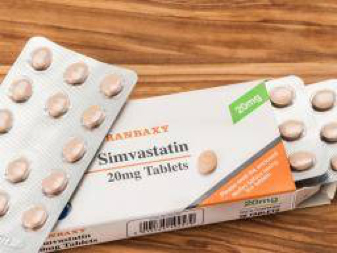Staff Writer, TMN Jul 07, 2018 7 years, 5 months, 2 weeks, 2 days, 23 hours, 19 minutes ago
Among susceptible individuals, statins — which are a common cholesterol-lowering medication — could increase the risk of type 2 diabetes by 30 percent. These new findings are sure to reignite debate. The relationship between statins and diabetes is investigated in a new study.
Statins lower
cholesterol by reducing its production in the liver. They do this by blocking an enzyme called hydroxy-methyl-glutaryl-coenzyme A reductase, which is involved in its manufacture.
Statins are one of the most widely prescribed types of drug in the world
Between 2014 and 2017,
over a quarter of adults in Asia over the age of 40 were taking cholesterol-lowering medication. The vast majority of these drugs were statins.
Alongside their cholesterol-lowering ability, statins also have positive effects on
inflammation and oxidative stress. Taken together, it would be unsurprising if statins helped to reduce the risk of developing
diabetes.
But the reverse may well be true. Evidence is mounting that long-term statin use could increase the risk of
type 2 diabetes. The first study to mention this potential effect was
published in 2008.
Between then and now, many
meta-analyses have been carried out. Some have added evidence supporting a link between statin use and type 2 diabetes, while
others have brought such a link into question. Therefore, a definitive answer is yet to be found.
Reopening the statin-diabetes debate
Many previous studies that pointed out a link did not specifically set out to
investigate diabetes and statins; their prime focus was on cardiovascular events. Because the number of diabetes cases within the experimental groups was low, it was difficult to get a good understanding of the associated risks.
So, to take a fresh look at this interaction, researchers from the Albert Einstein College of Medicine in New York City, NY, decided to focus their attention on an at-risk subsection of statin users and concentrate specifically on type 2 diabetes.
The team used data from the U.S. Diabetes Prevention Program Outcomes Study (DPPOS). DPPOS is a follow-up study to a long-term clinical trial that involved individuals who were obese or overweight and, therefore, at increased risk of developing type 2 diabetes.
The original study looked at whether or not "weight loss through lifestyle changes or treatment with metformin" (which is a drug that controls high blood sugar) might "reduce or delay" type 2 diabetes in high-risk people.
Once this study had ended, participants were invited to take part in DPPOS.
Blood pressure and blood fats were measured yearly, and blood glucose was measured every 6 months. At the same time, statin usage was recorded.
Data from 3,234 participants were analyzed. At the start of the trial, just 4 percent were using statins, but after 10 years, around a third were taking the drug. The majority were using either simvastatin or
atorvastatin.
Statin risks uncovered
Although the likelihood of being prescribed statins rose following a diabetes diagnosis, statin use was also associated with an increased risk of being diagnosed with diabetes. This association was significant, regardless of the treatment group that the participants had been in during the previous trial.
Overall, compared with not taking statins, their use was associated with a 36 percent increase in the risk of developing type 2 diabetes.
Although participants who were prescribed statins had higher glucose levels at baseline, this difference was not enough to account for the higher rates of diabetes. To further probe this relationship, the team split the statin data into low- and high-potency statins. They found no significant differences between the risks in these groups. The authors are quick to mention that the study has shortfalls: it is observational, and so cause and effect cannot be teased apart. Also, statin prescriptions were based on a
doctor's assessment and participants were therefore not randomly assigned. Finally, information on statin dosage was not available for analysis.
Despite these caveats, the authors believe that caution is warranted as these conclusions add to earlier studies with similar results. They say: "glucose status should be monitored and healthy lifestyle behaviors reinforced in high-risk patients who are prescribed statins for cardiovascular disease prophylaxis."
The debate regarding the relationship between statins and diabetes is certainly not over, and it is likely to rumble on. Because statin use and diabetes are both so prevalent in the world, it is important to gather as much information as possible regarding any interactions. Further studies are sure to follow, but it may be some time before the debate can be put to bed once and for all.
